Colorado Garden Ideas: Creative Tips for a Beautiful Backyard
Gardening in Colorado presents unique challenges and rewards, influenced by its high altitude and diverse climate. As you explore various ideas, you’ll discover how to create a flourishing garden that suits your environment. What are the best strategies to make your Colorado garden thrive year-round?
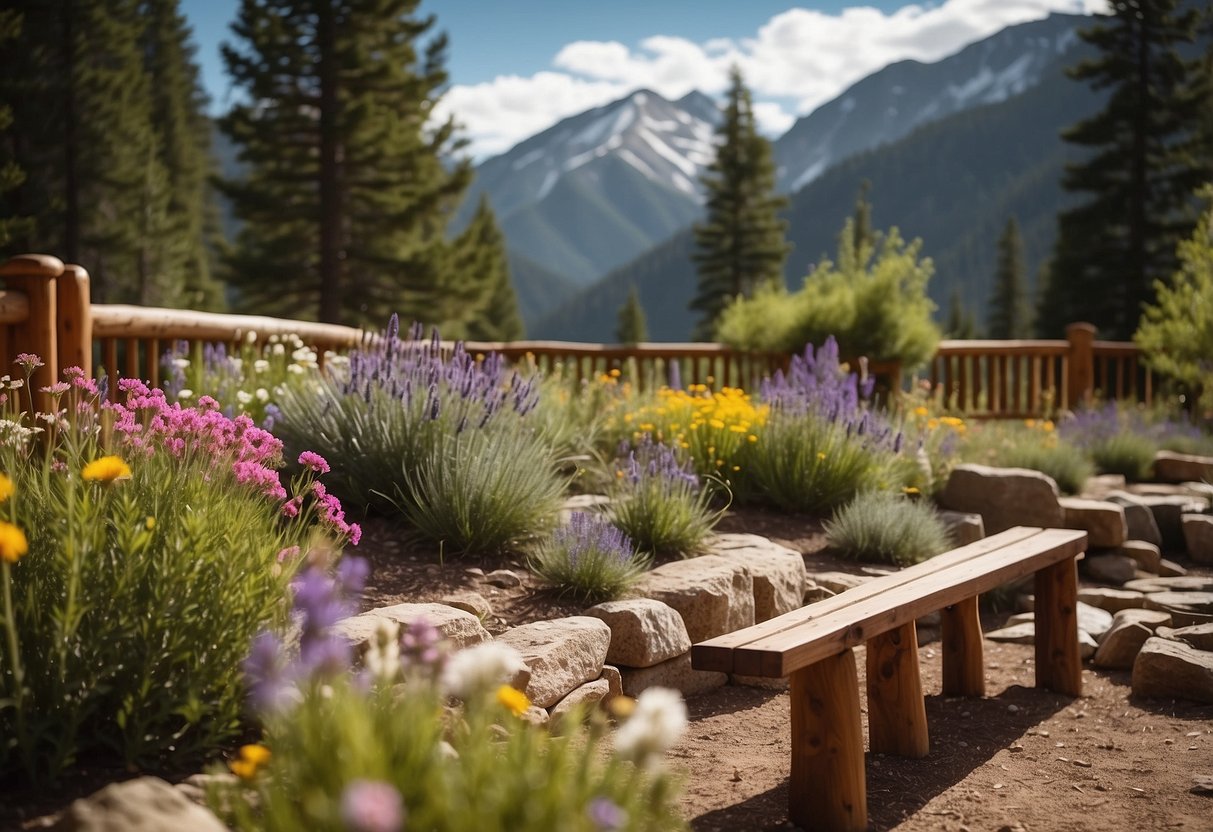
Whether you’re working with a small backyard or a sprawling landscape, there are countless creative approaches to consider. From selecting the right plants to optimizing your soil, your garden can become a beautiful and sustainable space tailored to Colorado’s distinct conditions.
1) Raised Garden Beds

Raised garden beds are a great way to grow plants in Colorado’s rocky soil. They let you control your soil and reduce weed growth. This means you spend less time weeding and more time enjoying your garden.
These beds also extend your growing season. They warm up quickly in spring and hold heat longer in fall.
You can choose different materials for your beds. Metal garden beds are rust-resistant and durable. This makes them perfect for Colorado’s harsh weather.
2) Native Plants for Low Water Use

Colorado’s climate can be dry, but you can still have a beautiful garden with native plants. These plants are adapted to the local conditions and require less water.
Consider using blue grama grass, which is both drought-tolerant and attractive. You can also plant Colorado columbine for a splash of color.
Another great option is the Rocky Mountain penstemon. This plant offers stunning purple flowers and thrives without much water.
For a touch of yellow, try the sunflower-like prairie coneflower. It brings brightness and is easy to maintain.
3) Rock Gardens

Rock gardens are a fantastic option for Colorado. They thrive with hardy plants that don’t need a lot of water. This makes them perfect for the local climate.
Choose plants that are suited for USDA zones 2 to 4. Mix in perennials, ornamental grasses, and small shrubs. This adds height and variety.
For a natural look, repeat some of the same plant species. Use creeping groundcovers to soften the rocks. Add bulbs like wild tulips and alliums for color. Don’t overcrowd the garden. Let it grow and spread slowly.
4) Perennial Flower Beds

Creating perennial flower beds is a great way to add lasting beauty to your garden. Perennials come back each year, providing continuous enjoyment without needing to replant.
Consider growing Adriatic Bellflowers that bloom all summer. These flowers look lovely in wall crevices.
Another option is Monardella marantha, which is perfect for rock gardens or edges. It has brilliant orange-scarlet flowers and prefers part sun.
Plan your flower beds carefully, considering the sun exposure and space each plant needs. A well-designed garden can give you vibrant colors all season long.
5) Wildlife-Friendly Gardens
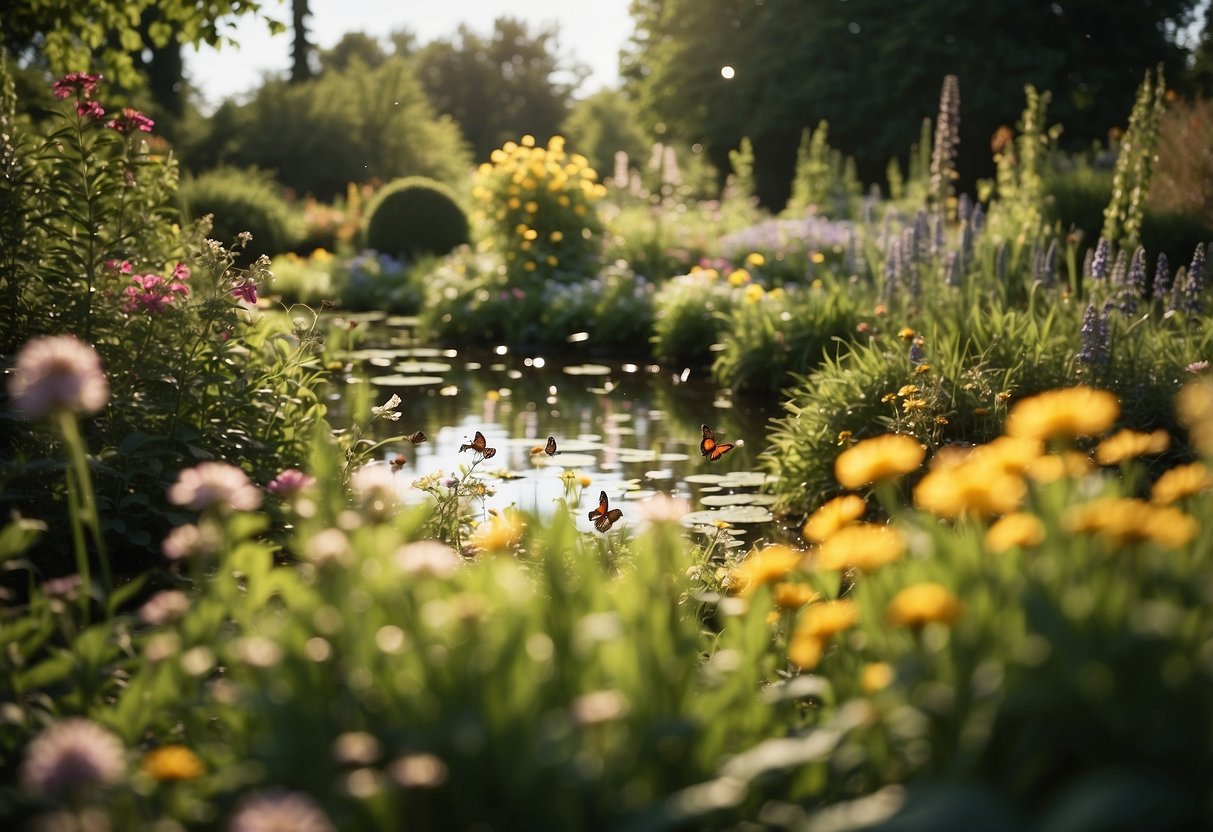
Creating a wildlife-friendly garden in Colorado can be rewarding. You’ll attract many different animals, from birds and butterflies to bees and other pollinators. Native plants are key. They support the local wildlife and provide food and shelter.
Consider adding a bee house. This provides a safe place for bees to nest and stay. It’s a simple way to help local pollinators thrive.
Another idea is to make a small meadow. Even a 5- by 10-foot meadow can attract species like frogs and turtles. It’s a great way to support diverse wildlife in your garden.
6) Colorado Blue Columbine

The Colorado Blue Columbine is a beautiful flower native to the high elevations of the Intermountain West. It features stunning blue and white petals that can brighten any garden.
Plant your Colorado Blue Columbine in hardiness zones 3-9. It thrives in partially shaded areas but also does well with some sun, as long as it gets enough water.
Make sure to space the plants 8-12 inches apart. They can reach up to 3 feet in height after two years. This flower will add vibrant color to your garden and attract hummingbirds.
7) Alpine Garden Ideas

Alpine gardens are perfect for Colorado’s unique climate. These gardens feature plants that thrive in rocky, high-altitude conditions.
Consider adding Erigeron compositus, also known as the Cutleaf Daisy. This plant does well in rock gardens or troughs.
Dianthus (Pink) and Phlox subulata (Creeping Phlox) can bring color and charm to your garden. Both are hardy and suitable for alpine conditions.
For a variety of textures, include Stachys byzantina (Lamb’s Ears) and Helianthemum (Rock Rose). These plants add visual interest and flourish in high-altitude gardens.
Remember, choosing the right plants can transform a dull spot into a beautiful alpine garden idea.
8) Herb Gardens
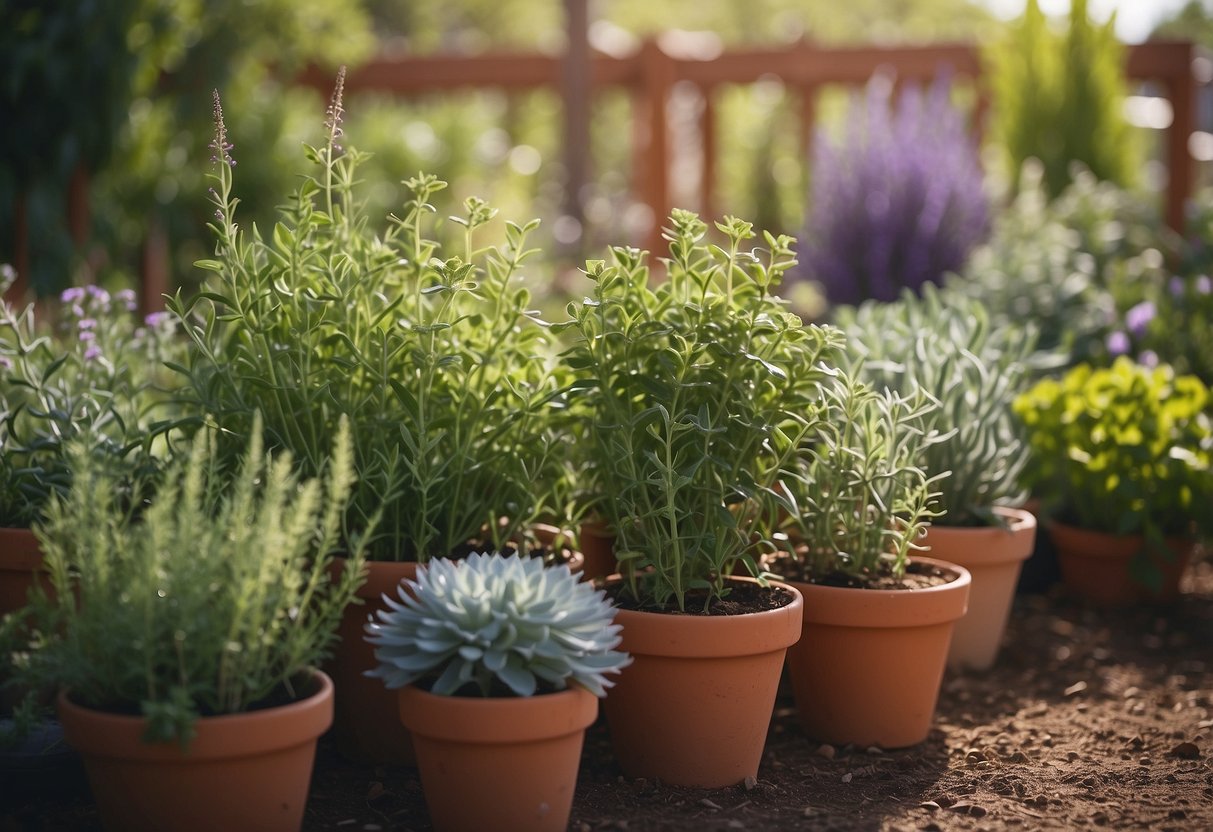
Adding an herb garden to your Colorado home is a great way to enjoy fresh flavors year-round. You can grow herbs like basil, chives, oregano, and rosemary. These herbs thrive in Colorado’s climate and can survive its winters.
Consider planting herbs in containers or garden beds. If you’re short on space, try a vertical garden or wall-mounted planters. You can also grow some herbs, like basil and mint, in water to keep things simple and pest-free. With a little care, your herb garden will provide you with fresh garnishes and fragrant beauty. Explore more ideas here.
9) Shade Gardens

Shade gardens are perfect for Colorado’s intense sun. They provide a cool retreat and can still be colorful. Denver Botanic Gardens shows how shade gardens can thrive in spring with blooming bulbs and perennials.
Plants like Heuchera, also called coral bells, offer colorful foliage and summer flowers. Other great choices are lady’s mantle, sweet woodruff, and hostas. These plants prefer shade and are well-suited for Colorado’s semi-arid environment.
10) Pond Gardens
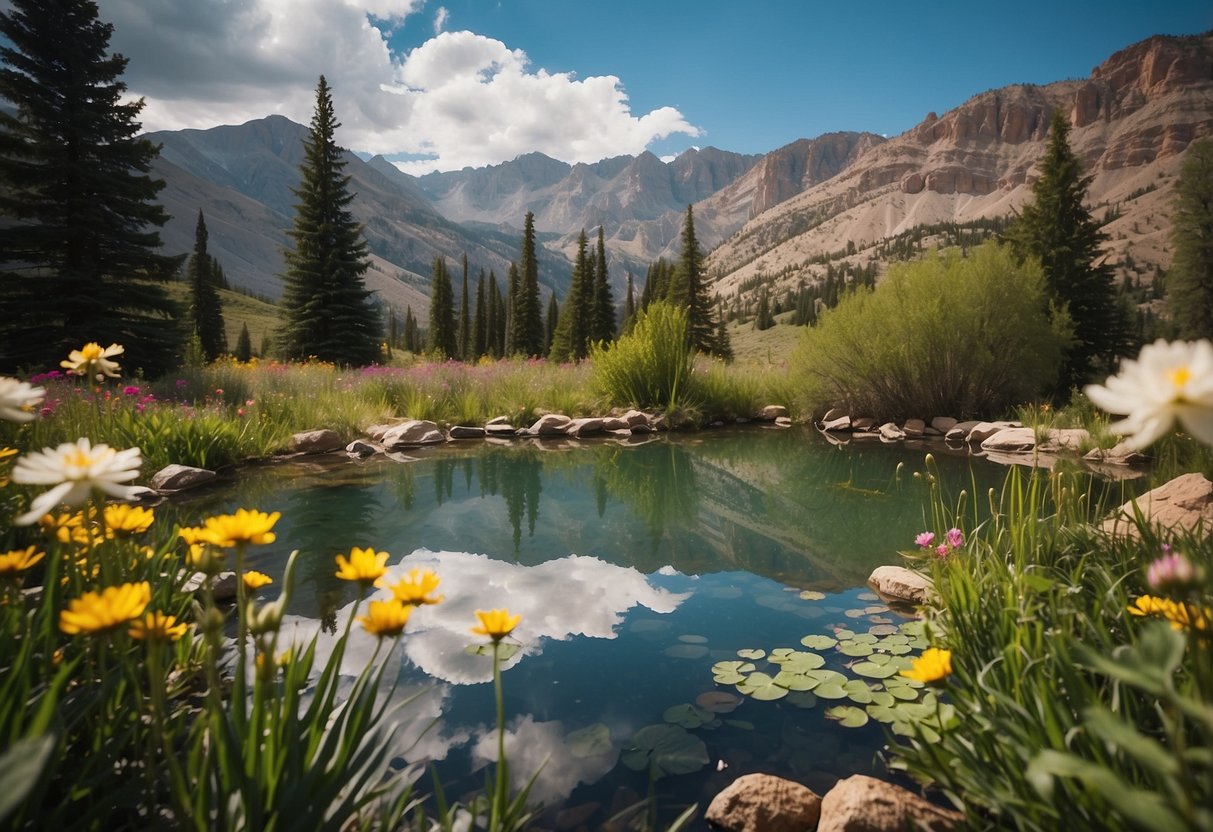
Creating a pond garden in Colorado can bring a touch of tranquility to your outdoor space. You can choose a variety of designs, from elegant koi ponds to simple, budget-friendly options.
A flowing, organic shape might look more natural. If you prefer a modern look, go for a geometric shape.
Don’t forget to add plants to keep your pond clean and beautiful. Plants like water lilies can cover the surface, helping to prevent algae.
For a unique touch, consider a koi pond with a raised edge. This allows you to sit and enjoy the peaceful view of the fish.
Designing Your Colorado Garden
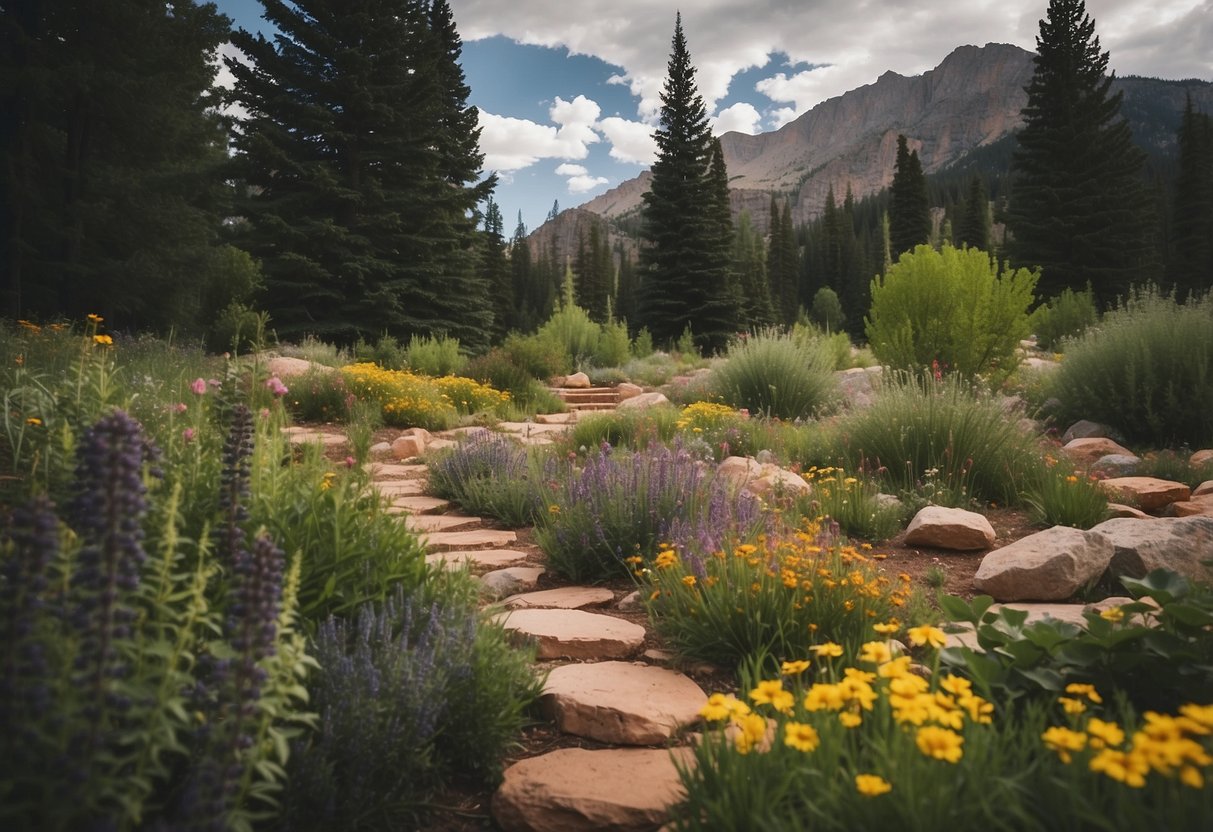
In Colorado, gardening is all about selecting hardy plants that can withstand the local climate and planting them at the right times to ensure they flourish. You need to focus on soil quality, watering methods, and utilizing native plants to create a sustainable garden.
Choosing the Right Plants
Selecting the right plants is crucial when designing your Colorado garden. The state’s high altitude and low humidity mean you should choose plants suited for these conditions. Consider perennial plants like Agastache, also known as Hummingbird Mint, which suits USDA Zones 4-10 and requires well-drained soil. These plants are deer-resistant and can handle partial to full sun.
Native wildflowers such as the Rocky Mountain Columbine and blanket flower do well in the state’s climate. When planning your garden, include a mix of flowers, shrubs, and trees to add variety and structure. Use hardy grasses like Blue Grama Grass or Buffalograss for ground cover.
Seasonal Planting Tips
Timing your planting is key to a successful garden. Start by preparing your soil in early spring, ensuring it is well-drained and nutrient-rich. Plant perennials and hardy bushes in April or May, giving them time to establish before the summer heat. For colorful flowers, plant annuals like marigolds and zinnias once the danger of frost has passed.
During summer, focus on maintaining moisture levels by watering deeply and less frequently to encourage deeper root growth. When fall arrives, plant late-blooming perennials and bulbs for a splash of color next spring. Cover young plants with mulch to protect them from harsh winter temperatures. Make sure to clear dead foliage and debris to avoid pests and diseases.
Sustainable Gardening Practices
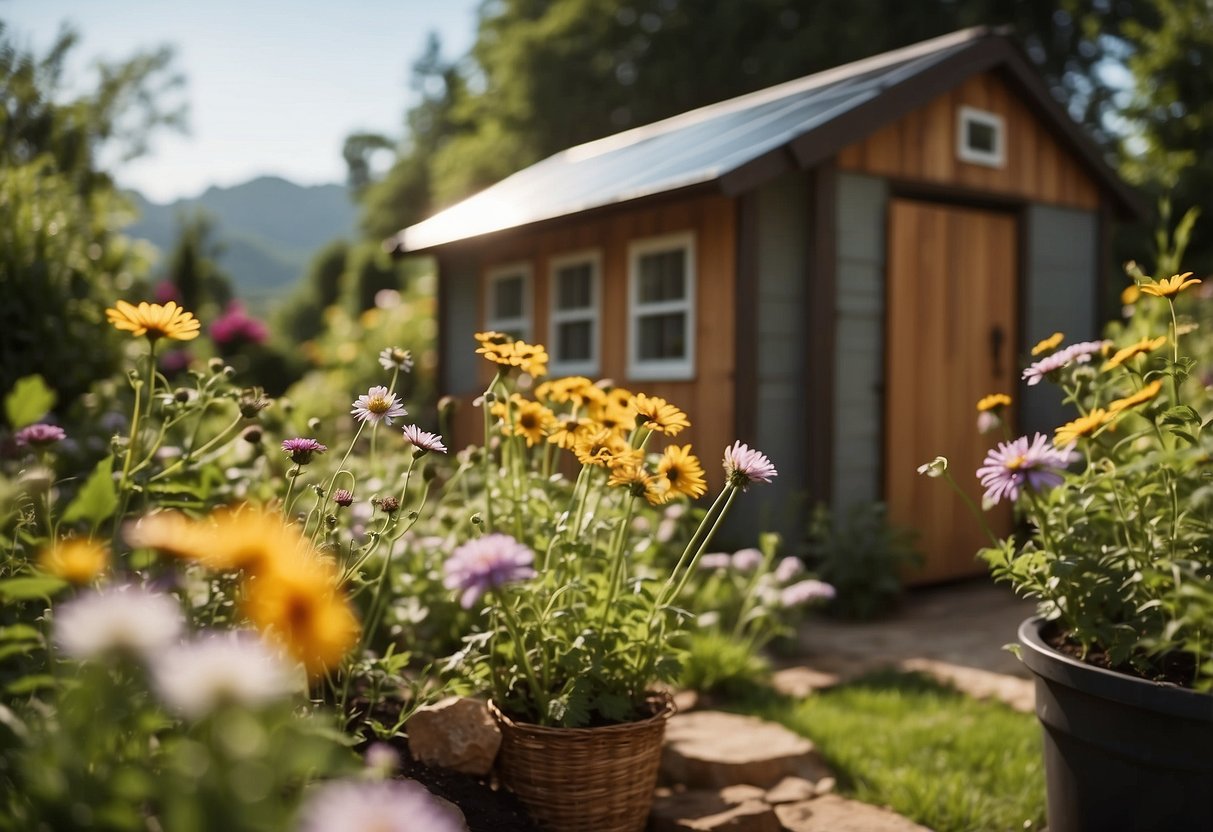
Creating a sustainable garden in Colorado involves effective water conservation techniques and smart organic soil management. These practices help you maintain a healthy garden while reducing environmental impact.
Water Conservation Techniques
In Colorado’s dry climate, conserving water is crucial. One way to save water is by using drip irrigation systems. These systems deliver water directly to the plant roots, minimizing evaporation. You can also collect rainwater in barrels and use it for your garden. This method is both eco-friendly and cost-effective.
Another technique is mulching. By covering the soil with mulch, you can reduce water evaporation and protect plant roots. Organic mulches like straw, wood chips, or compost are excellent choices. Also, consider planting drought-resistant native plants. They naturally require less water and can thrive in Colorado’s climate.
Organic Soil Management
A healthy garden starts with fertile soil. Using organic matter like compost is a great way to enrich your soil. Compost adds essential nutrients and improves soil structure. You can create your own compost from kitchen scraps, yard waste, and leaves.
Another important practice is crop rotation. Rotating different plants in your garden each season keeps the soil rich in nutrients and reduces the risk of pests and diseases. Avoid using synthetic fertilizers as they can harm the soil and beneficial insects. Instead, opt for natural fertilizers like bone meal, fish emulsion, and seaweed extract.
Use cover crops, such as clover or rye, to enhance soil health during off-seasons. These plants prevent erosion, add organic matter, and improve soil fertility. By following these practices, you can create a sustainable and thriving garden.







